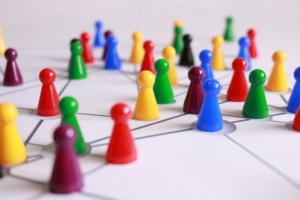The ADHD Brain and Systems – Part 2

Part 1 of The ADHD Brain and Systems addresses how the ADHD brain reacts to the systems we implement to bring order and control to our lives. It also provides three strategies you can use to make a system more effective. If you have not read part 1 yet, pause here and read it before proceeding.
Remember Carla from part 1? She and I worked together to solve her systems problem. We explored the routine she had put in place for her day. As we probed and processed, she concluded that she expected her system to do too much. She acknowledged that she had created it based on how she believed she “should” do it. She realized that her expectation of the system to take her from zero order to strict and rigid structure in one fell swoop was unrealistic and unattainable.
When you think about yourself and your past systems, does this sound familiar?
Do you want to create better systems for yourself?
Consider these Five Tips for Getting Started:
Reflect on your old discarded systems. Mine them for the g ems that were useful and effective. Consider characteristics or patterns those gems have in common. How can you incorporate those into systems you create for yourself moving forward?
ems that were useful and effective. Consider characteristics or patterns those gems have in common. How can you incorporate those into systems you create for yourself moving forward?
 Keep it simple. This phrase seems so over used, yet it is so true. I have clients who spend hours, days even, creating complex systems with bells, whistles, and baubles of all sizes and colors to account for any and every possibility. Their systems are detailed, comprehensive, complex, and attractive but not practical. Their brains enjoy the creative process of putting them together but balk at actual implementation because the systems are too overwhelming and complicated to use. So, keep it simple.
Keep it simple. This phrase seems so over used, yet it is so true. I have clients who spend hours, days even, creating complex systems with bells, whistles, and baubles of all sizes and colors to account for any and every possibility. Their systems are detailed, comprehensive, complex, and attractive but not practical. Their brains enjoy the creative process of putting them together but balk at actual implementation because the systems are too overwhelming and complicated to use. So, keep it simple.
 Use a system that works with YOUR brain. This requires some self observation, analysis, and, above all, honesty. It also requires you to let go of the idea (hope) that someone other than you knows the perfect magic way of doing things that will make everything in your life fall into place.
Use a system that works with YOUR brain. This requires some self observation, analysis, and, above all, honesty. It also requires you to let go of the idea (hope) that someone other than you knows the perfect magic way of doing things that will make everything in your life fall into place.
![]() Keep your expectations realistic. 100% consistency isn’t an achievable goal. How about putting into place a repeatable structure that you can implement 70% of the time on average and fall back to when life gets messy?
Keep your expectations realistic. 100% consistency isn’t an achievable goal. How about putting into place a repeatable structure that you can implement 70% of the time on average and fall back to when life gets messy?
 Get a thinking partner. It’s hard to ask yourself the hard questions and be objective about your responses when just doing it in your head. A coach is specially trained to collaborate with you to help you move forward. If setting up with a coach doesn’t feel like the right move for you, a trusted friend or family member may be able to fill the role. Who is a person in your life who can listen, ask good questions, and collaborate with you to process your wants, needs, patterns, skills, and so forth?
Get a thinking partner. It’s hard to ask yourself the hard questions and be objective about your responses when just doing it in your head. A coach is specially trained to collaborate with you to help you move forward. If setting up with a coach doesn’t feel like the right move for you, a trusted friend or family member may be able to fill the role. Who is a person in your life who can listen, ask good questions, and collaborate with you to process your wants, needs, patterns, skills, and so forth?
What’s your next move?


 Persistence, also known as grit, can lead to astounding success. It allows the underdog to rise up and overcome obstacles to achieve what no one thought he could. Don’t misunderstand me. I believe in the power of persistence.
Persistence, also known as grit, can lead to astounding success. It allows the underdog to rise up and overcome obstacles to achieve what no one thought he could. Don’t misunderstand me. I believe in the power of persistence.

 People motivated by the goal of being likeable tend to do three things:
People motivated by the goal of being likeable tend to do three things: On the surface, “setting the intention” is akin to setting a goal. Unfortunately, when things don’t turn out as we wanted them, we tend to fall back on our “intention.” When the person who set the intention to maintain eye contact is alerted that the intensity of the eye contact came across as disconcerting and intimidating, the person will say, “I didn’t mean for that to happen.” This statement doesn’t correct or minimize the consequence, and it sounds like an un-empathic excuse lacking acknowledgement of accountability.
On the surface, “setting the intention” is akin to setting a goal. Unfortunately, when things don’t turn out as we wanted them, we tend to fall back on our “intention.” When the person who set the intention to maintain eye contact is alerted that the intensity of the eye contact came across as disconcerting and intimidating, the person will say, “I didn’t mean for that to happen.” This statement doesn’t correct or minimize the consequence, and it sounds like an un-empathic excuse lacking acknowledgement of accountability. This line of questioning creates a situation in which one partner does not have to take responsibility for the hurt caused to the other partner. In fact, it places blame on the hurt partner. The hurt partner must now either accept the offense as okay or defend him or herself. Neither event will turn out well for the hurt partner or for the relationship.
This line of questioning creates a situation in which one partner does not have to take responsibility for the hurt caused to the other partner. In fact, it places blame on the hurt partner. The hurt partner must now either accept the offense as okay or defend him or herself. Neither event will turn out well for the hurt partner or for the relationship. When we set the consequence, choose the best possible action path, and achieve the desired outcome, others view us as trustworthy, reliable, thoughtful, and considerate. It demonstrates respect. What a great foundation upon which to build a friendship, a team, a partnership, or a romance.
When we set the consequence, choose the best possible action path, and achieve the desired outcome, others view us as trustworthy, reliable, thoughtful, and considerate. It demonstrates respect. What a great foundation upon which to build a friendship, a team, a partnership, or a romance. For many of us, that nasty green monster has followed us into adulthood. It nips at our heels. It snatches at our ankles. Fear of it keeps us up at night. Exhaustion from fending it off drives us to hide deep under our covers.
For many of us, that nasty green monster has followed us into adulthood. It nips at our heels. It snatches at our ankles. Fear of it keeps us up at night. Exhaustion from fending it off drives us to hide deep under our covers. In his book, The Coaching Habit, Michael Bungay Stanier, discusses the three Ps of every problem. And every problem can be analyzed to discover its three Ps. Essentially, they stand for: Project, People, Patterns. Each one contributes to the problem and, if appropriately addressed, can contribute to the solution(s). Project is the task. People refers to relationships we have with others. Patterns expands to our patterns of behavior.
In his book, The Coaching Habit, Michael Bungay Stanier, discusses the three Ps of every problem. And every problem can be analyzed to discover its three Ps. Essentially, they stand for: Project, People, Patterns. Each one contributes to the problem and, if appropriately addressed, can contribute to the solution(s). Project is the task. People refers to relationships we have with others. Patterns expands to our patterns of behavior. Wow! The look on his face once he had finished his analysis. He had dragged his big green monster out into the open, was looking straight into its cesspool eyes, and staring it down! He had clarity on how to wage his attack and could focus his efforts one P at a time. His monster was shrinking SMALLER, and Smaller, and smaller.
Wow! The look on his face once he had finished his analysis. He had dragged his big green monster out into the open, was looking straight into its cesspool eyes, and staring it down! He had clarity on how to wage his attack and could focus his efforts one P at a time. His monster was shrinking SMALLER, and Smaller, and smaller. ANSWER 1:
ANSWER 1: While the client in Answer 1 is decidedly ready for coaching, the client in Answer 2 is not. I venture to guess that the client in Answer 2 has already burdened friends with these complaints. I also venture to guess that any assistance and advice offered by friends has been largely ignored, much to the frustration of those friends.
While the client in Answer 1 is decidedly ready for coaching, the client in Answer 2 is not. I venture to guess that the client in Answer 2 has already burdened friends with these complaints. I also venture to guess that any assistance and advice offered by friends has been largely ignored, much to the frustration of those friends.

